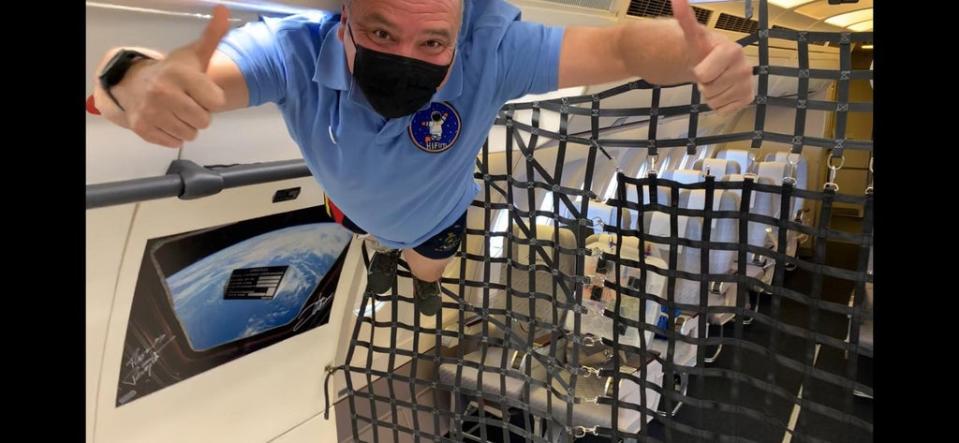Jump to it: London inventor’s Zero G device to ‘solve’ astronaut fitness

A London inventor’s “jumping machine” designed to help astronauts counter the effect zero gravity has on their bodies has been successfully tested.
The High Frequency Impulse for Microgravity (HIFIm) device cuts the time astronauts need to exercise each day to keep up bone density and muscle mass from two hours to no more than 30 minutes. It was tested in space-like conditions for the first time on Tuesday.
Creator John Kennett said the tests had achieved “a series of world firsts”. He said: “It was a great success. A culmination of many years of hard work. I am thrilled to have proven that HIFIm, the next generation of astronaut and parastronaut multi-exercise countermeasures, performed superbly.”
Aerospace physiologist and Army reserve officer Tess Morris-Paterson, who tested the device, said the experience was “euphoric and surreal”.
Mr Kennett added: “We had to prove that a person could jump in zero gravity and that HIFIm would not put too much load and vibration through the supporting structure, and we did it.
“The next level is to test HIFIm on the International Space Station.”

The machine, which received £250,000 in funding from the UK Space Agency, was tested as an Airbus A310 flew to a maximum height of 8,500 metres and reproduced gravity-free conditions for more than 11 minutes.
Libby Jackson, exploration science manager at the UK Space Agency, said: “John’s exercise machine is very important in terms of supporting the vascular system and offering resistive exercise in a single and compact device. On a space station there may be a treadmill but going to the moon or Mars ... HIFIm may be the long-term solution.”
Astronauts can lose 10 per cent of their bone density over six months in space, requiring a strict exercise regime to mitigate against the effect zero gravity.
Flying high: members of the team testing the High Frequency Impulse for Microgravity machine
Read More
All remaining countries removed from travel red list
Man who emailed Rayner felt she was ‘partially responsible’ for Amess’ death
Teenager handed life term for murdering sisters as part of demonic blood pact

 Yahoo Finance
Yahoo Finance 